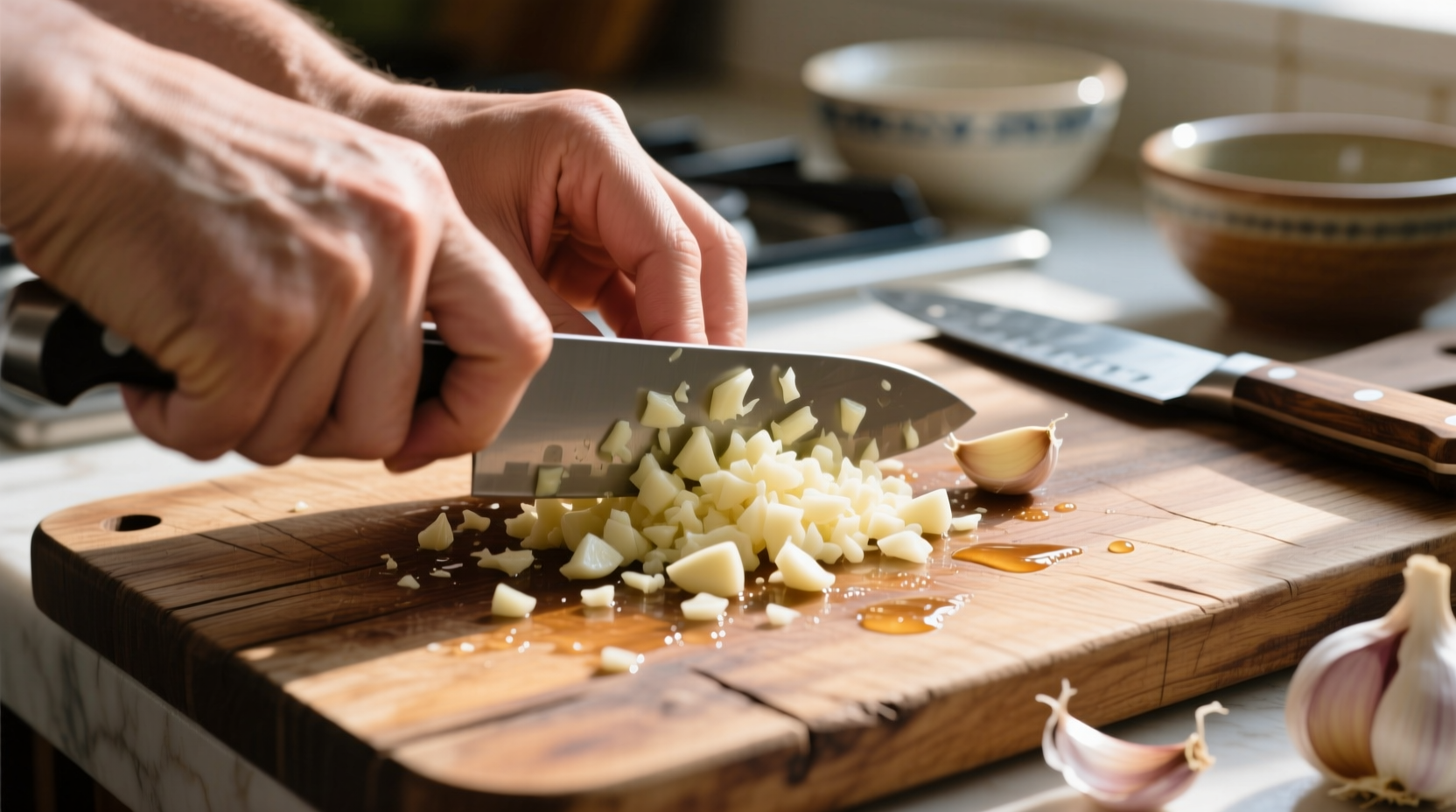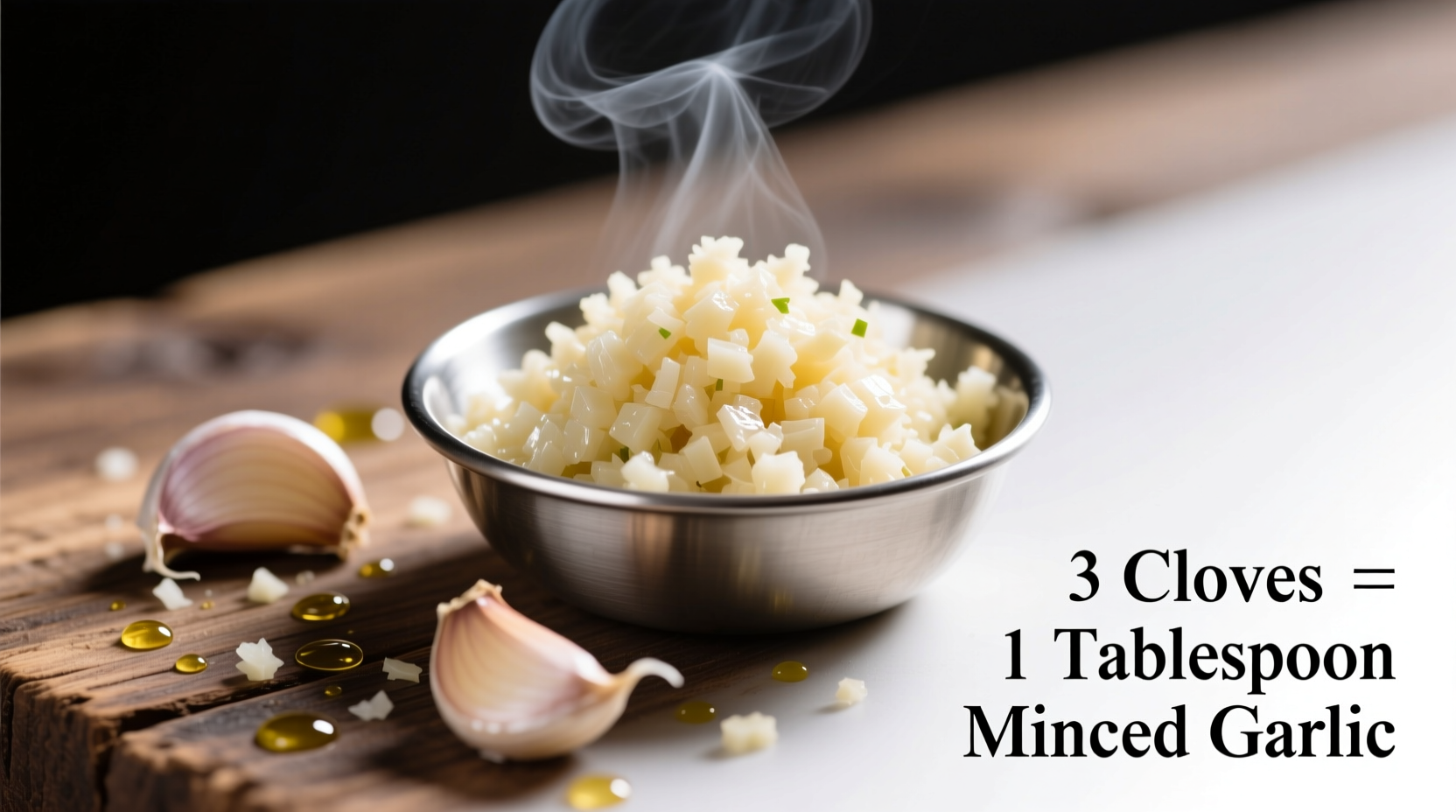Ever stood in your kitchen mid-recipe, garlic in hand, wondering how many cloves translate to that minced measurement? You're not alone. Getting garlic measurements right affects flavor balance in everything from pasta sauces to roasted vegetables. This guide delivers precise conversions plus professional techniques to help you nail garlic measurements every time.
Why Garlic Measurements Matter in Cooking
Garlic's potent flavor can make or break a dish. Too little leaves recipes flat; too much overwhelms other ingredients. Professional chefs know that consistent measurements prevent culinary disasters. The size variation in garlic cloves creates confusion - a small clove might yield half what a large one produces. Understanding these differences helps you adjust recipes confidently.
Garlic Clove Basics: What Affects Volume
Not all garlic cloves measure the same. Several factors influence how much minced garlic you'll get:
- Clove size: Small cloves (½" long) yield about ½ teaspoon minced
- Moisture content: Fresher garlic contains more water, affecting volume
- Preparation method: Hand-minced versus food processor results in different densities
- Garlic variety: Softneck types (common in supermarkets) differ from hardneck varieties
| Clove Count | Minced Measurement | Equivalent in Teaspoons |
|---|---|---|
| 1 small clove | ½ teaspoon | 0.5 tsp |
| 1 medium clove | 1 teaspoon | 1 tsp |
| 1 large clove | 1½ teaspoons | 1.5 tsp |
| 3 medium cloves | 1 tablespoon | 3 tsp |
| 6 medium cloves | 2 tablespoons | 6 tsp |
How to Properly Mince Garlic for Accurate Measurements
The way you prepare garlic affects volume. Follow these professional steps for consistent results:
- Peel cloves by placing flat side of knife on clove and pressing firmly
- Remove any green sprouts (they add bitterness)
- Use a sharp chef's knife - dull blades crush rather than cut
- Rock knife back and forth over garlic pieces until uniformly fine
- For exact measurements, lightly pack minced garlic into measuring spoon

When Precision Matters: Recipe Applications
Certain dishes require exact garlic measurements while others allow flexibility. Understanding these contexts prevents flavor imbalances:
| Recipe Type | Precision Needed | Professional Tip |
|---|---|---|
| Vinaigrettes & dressings | High precision | Raw garlic intensifies over time - measure carefully |
| Pasta sauces | Moderate precision | Add half initially, more after tasting during cooking |
| Roasted vegetables | Flexible | Whole cloves roasted alongside vegetables mellow significantly |
| Garlic bread | High precision | Too much creates bitter aftertaste when baked |
Storage Tips for Minced Garlic
Freshly minced garlic loses potency quickly. For best results:
- Use immediately for strongest flavor
- Store in airtight container with teaspoon of oil to prevent browning
- Refrigerate for up to 5 days (flavor diminishes over time)
- Freeze in ice cube trays for longer storage (up to 3 months)
According to USDA FoodData Central, fresh garlic contains volatile compounds that degrade rapidly after cutting. The enzyme alliinase activates when garlic is cut, creating the characteristic flavor compounds that also break down over time. This chemical process explains why pre-minced jarred garlic lacks the complexity of fresh.
Common Measurement Mistakes to Avoid
Even experienced cooks make these garlic measurement errors:
- Using jarred minced garlic as direct substitute (contains preservatives affecting flavor)
- Not accounting for clove size differences in recipes
- Packing minced garlic too tightly into measuring spoons
- Adding all garlic at once rather than building flavor gradually
Professional chefs from the Culinary Institute of America recommend tasting as you go when working with garlic. Since potency varies by season and growing conditions, your best tool remains your palate. Start with conservative measurements, then adjust to taste.











 浙公网安备
33010002000092号
浙公网安备
33010002000092号 浙B2-20120091-4
浙B2-20120091-4